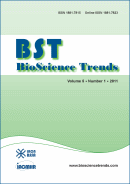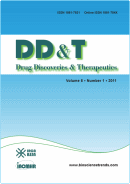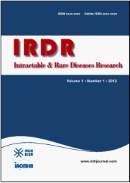Drug Discov Ther. 2025;19(5):314-324. (DOI: 10.5582/ddt.2025.01089)
Development and reliability assessment of a liquid-phase measurement for skin taurine using skin blotting
Kato K, Ogai K, Hasegawa Y, Konya C, Sanada H, Minematsu T
Skin taurine is an indicator of dehydration and can be noninvasively collected through skin blotting. However, conventional taurine measurement using ninhydrin raises safety and specificity concerns, limiting its application in point-of-care testing. In this study, we propose a novel liquid-phase measurement of taurine collected via skin blotting. The aim of this study was to develop a method for liquid-phase measurement of skin taurine and to demonstrate its validity and reliability. This study consisted of (1) determining optimal recovery conditions, including the type and concentration of recovery solution and shaking method (mild, intense, or no shaking), (2) evaluating the specificity of taurine measurement, and (3) assessing the intra- and inter-rater reliability of the developed method for skin taurine measurement. Optimal recovery was achieved by intense shaking for 10 min with a 110 mM sodium chloride solution, and this method could measure taurine concentrations from 31.25 to 500 μM (r = 0.9983, p < 0.001), confirming its validity. Linear regression analysis showed that the addition of amino acids or skin lysates had little effect on taurine measurement. The developed method demonstrated high intra-rater reliability (intraclass correlation coefficient [ICC] (1,1) = 0.896, p < 0.001 for examiner A; ICC (1,1) = 0.755, p < 0.001 for examiner B), but inter-rater reliability was not significant (ICC (2,1) = 0.187, p = 0.15). The liquid-phase measurement of skin taurine demonstrated high sensitivity, specificity, and intra-rater reliability. Further studies are needed to improve inter-rater reliability for applying this method as a point-of-care tool for dehydration assessment.







